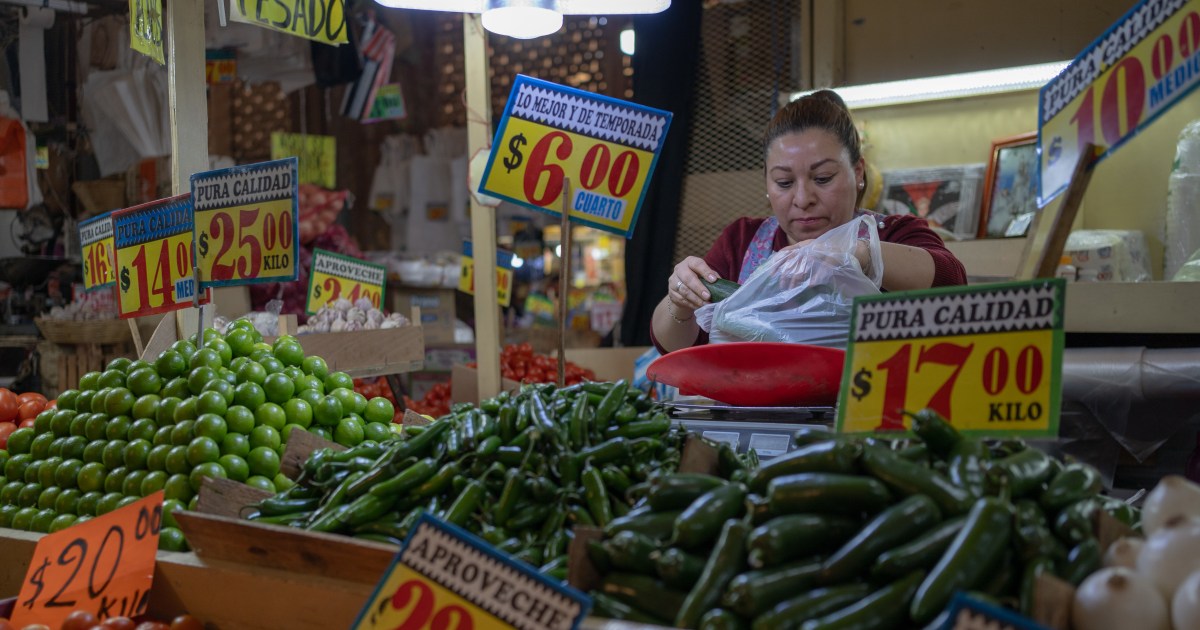The White House surprises with changes in policies towards Cuba 2:55
(CNN Spanish) --
Remittances - the money that migrants send to their loved ones in their countries of origin - are an important source of external financing for countries such as Mexico, Colombia and Argentina.
But what is its impact on the economy in Latin America?
In fact, remittances have been the main source of external financing for low- and middle-income countries (LMICs) since 2016—with the exception of China—and remittances have accounted for roughly three times the size of aid. official development (ODA) for more than a decade, according to a report published in May by the Global Knowledge Partnership on Migration and Development (KNOMAD) and the World Bank.
"Remittances are a lifeline that extends from developed countries to developing countries and serves to keep people in the countries that receive them," Jorge Godínez Reyes, director for the Americas of WorldRemit.
International Day of Remittances: here the countries that receive them the most
Speaking specifically of Latin America and the Caribbean, remittance flows increased to US$131,000 in 2021, an increase of 25.3% compared to 2020. And according to the World Bank, among the countries that registered a growth rate of two digits of remittance flows are Guatemala (35%), Ecuador (31%), Honduras (29%), Mexico (25%), El Salvador (26%), Dominican Republic (26%), Colombia (24%) , Haiti (21%) and Nicaragua (16%).
According to KNOMAD, remittance flows (personal transfers) to Mexico increased to US$10.9 billion (25%) in 2021, compared to 2020. The reason?
The increase in migrants in transit from countries such as Honduras, El Salvador, Guatemala, Haiti, Venezuela and Cuba, who during their way to the United States, must pay for their travel costs "including the fees to be paid for illegal border crossings", indicates the report.
advertising
“We have observed that even though three-quarters of the flow of remittances continues to arrive in the region from the United States, the movement of intra-regional remittances has increased due to the passage of migrants on their way north through Mexico and migratory movements towards Chile, Colombia, Costa Rica, Panama or the Dominican Republic,” said Godínez Reyes, in a press release.
For its part, KNOMAD also highlights in its report the impact that the immigration policy known as Title 42 has had on the increase in remittances to Mexico, considering that since immigrants cannot cross into the US, they stay longer. in Mexico and therefore, they need more resources.
Migration on the continent: this is the situation that the Summit of the Americas must address
According to figures from the Government of Mexico, in 2021 a total of 307,679 undocumented foreigners were reported to the immigration authority in Mexico, an increase of 273% compared to the 82,379 reported in 2020.
The weight of remittances in Latin America
According to the World Bank, remittances represent at least 20% of the gross domestic product (GDP)—the broadest measure of economic activity—of several countries in Latin America and the Caribbean:
"The importance of remittances for all the people who receive them is because they are a subsistence channel," Godínez Reyes told CNN, indicating that the income from remittances for countries like Haiti, Honduras or El Salvador is more than 20 % of its GDP, which is an indication of the importance of remittances for families and the economy of the countries.
The United States is the largest source of remittances for Latin America, so money transfers are linked to the US economy.
"The economy in the United States has a direct impact on remittances, because with greater employment opportunities in the United States or greater growth, we see that there is a direct relationship in the sending of remittances," said Godínez Reyes.
The KNOMAD report estimates that in 2022, remittances will grow by 9.1%.
However, Godínez Reyes indicated that due to inflation in the US, adjustments in the economies could come.
"Both the sender and the receiver will have to make adjustments to survive with what is available. So that may slow down a bit the speed of growth that we were seeing," he added.
The cost of sending remittances
According to the World Bank, the average cost to send US$200 to the Latin America and Caribbean region stood at 5.6% during the fourth quarter of 2021, unchanged from the previous year.
How much do they add, where do they come from and what is the importance of remittances for the Cuban economy
The average cost to send US$200 to the Latin American and Caribbean region remained at 5.6% during the fourth quarter of 2021, unchanged compared to the percentage registered in 2020. Mexico remains the second country with the lowest cost (in G-20 recipient countries) with remittance costs at 4.3% for sending US$200.
Sending remittances Latin America





/cloudfront-eu-central-1.images.arcpublishing.com/prisa/2VA2ALVO6BDXLM22W73UWN5GDY.jpg)









